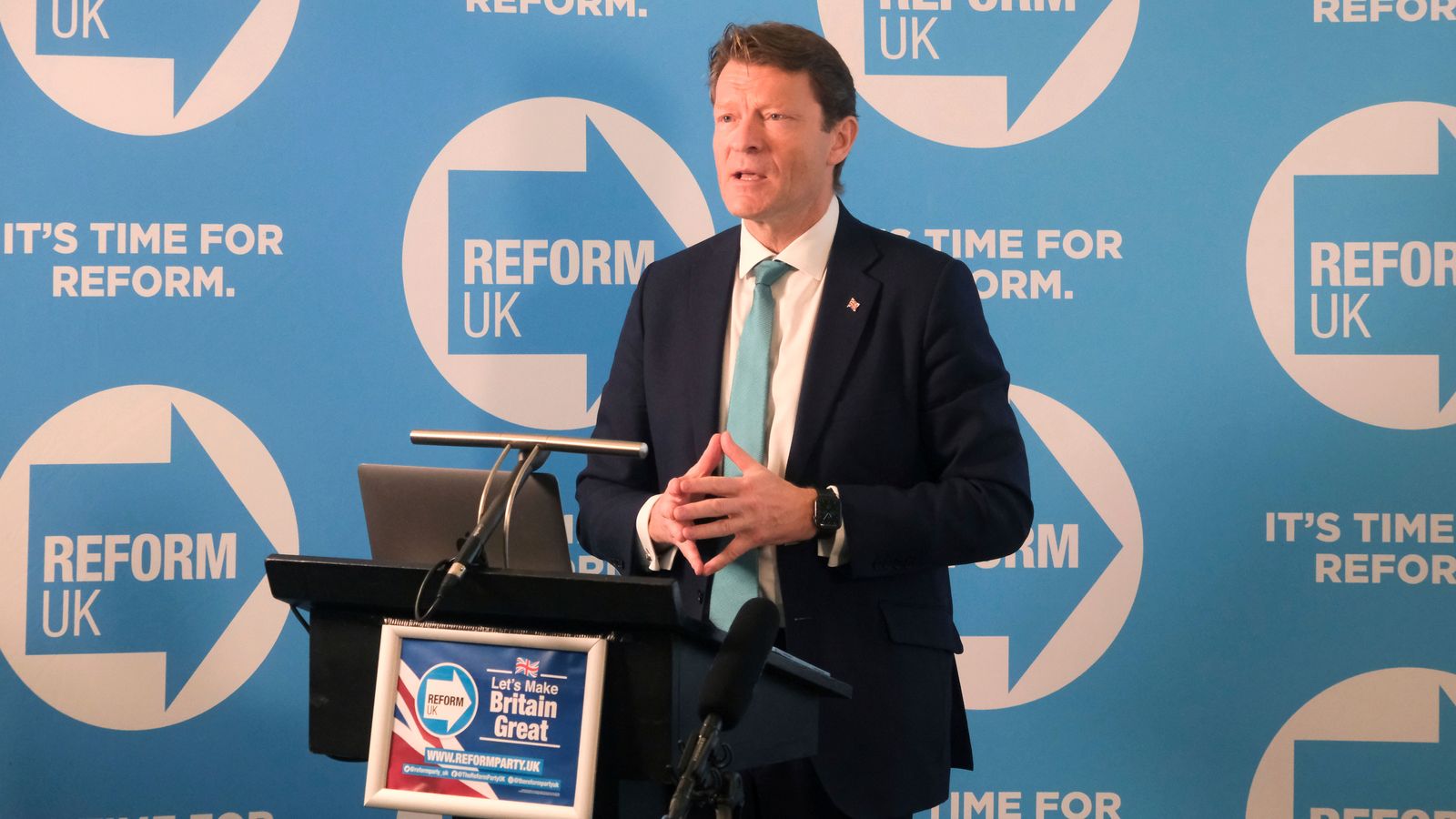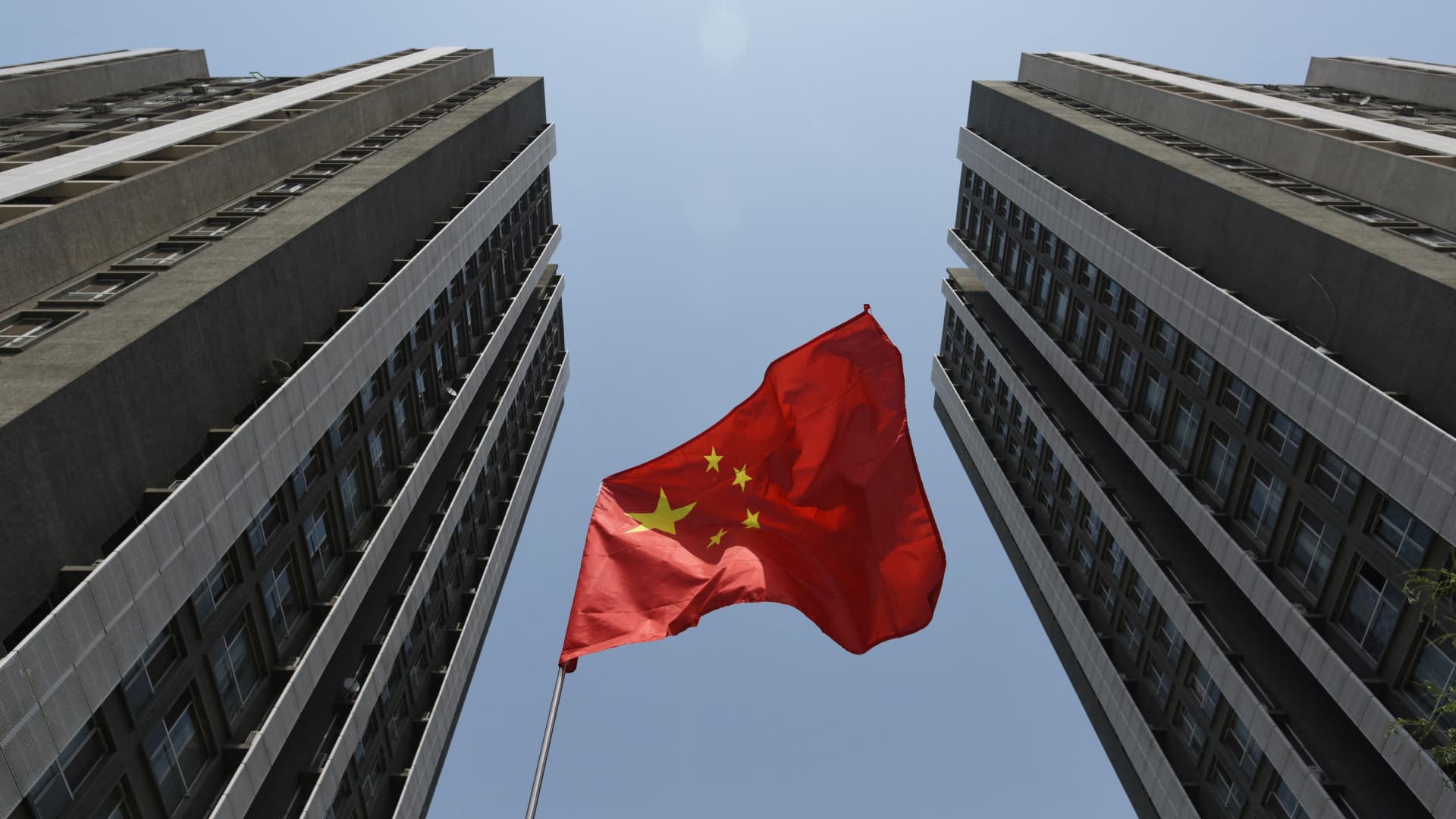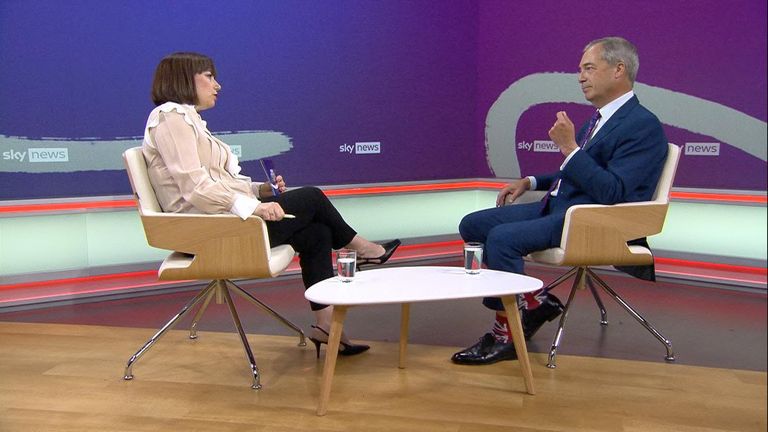Reform UK is set to feature in a UK general election for the first time, but it is far from a new party.
Party leader Richard Tice is promising to put up a candidate in every seat England, Scotland and Wales at the general election expected to be held this year.
And the polls suggest Reform UK could have an impact on the overall result, with the party currently level pegging with the Liberal Democrats, according to Sky’s poll tracker.
So who is part of Reform UK, where did the party come from and what does it stand for?
Sky poll tracker – see the state of the parties
Key figures
Mr Tice, who was a Conservative Party member before Brexit, is the current leader of Reform UK.
Before that, the party was headed by Nigel Farage, before he stood aside in early 2021.
But he is still very much part of the movement, and there have been repeated questions about whether Mr Farage might stand to as a candidate under the Reform banner.
As recently as 3 January, Mr Tice said Mr Farage is still “assessing” what role he will play.
Mr Farage still wields power within the party, remaining as a director of Reform UK Party Limited, as well as the only person with significant control of the company, according to Companies House.
Aside from Mr Farage and Mr Tice, another well-known Reform UK supporter is Ann Widdecombe, who was previously a Conservative MP and minister.
Former Labour MP Baroness Kate Hoey is also supporting the party in the upcoming Wellingborough by-election.
Meanwhile, the party’s deputy leaders are David Bull and Ben Habib – the latter of whom is standing in the Wellingborough by-election on 15 February.
Where did the party come from?
Before the party was called Reform UK, it was known as the Brexit Party.
This was a single issue party, launched in early 2019, which campaigned for the UK to leave the European Union without a deal.
It was initially led by Catherine Blaiklock, but with the backing of Mr Farage.
At the time, he was still a member of the European Parliament, but had left the UK Independence Party (UKIP) in 2018.
Ms Blaiklock’s time in charge did not last long, and she resigned after messages she posted on Twitter from before her time in charge came to light, which were branded “racist” by the group Hope Not Hate.
Mr Farage then took over.
In the run-up to the European elections in May 2019, numerous UKIP MEPs joined the Brexit Party.
At that election, the party received the largest vote share, getting 29 MEPs compared to the Lib Dems’ 16, Labour’s 10, the Green’s seven, and the Conservatives’ four. UKIP lost all 24 of its MEPs.
Mr Tice was elected to the European Parliament as one of the party’s MEPs.
Following this election win, the party spent the summer pressuring MPs to pursue a no-deal Brexit.
The party initially planned to field candidates nationwide in the 2019 election, but later decided not to contest seats won by the Tories in 2017.
It failed to win a single seat.
Read more about politics:
Could Tory plot tempt Sunak into early general election?
The by-election battles of Rishi Sunak’s premiership
Reform UK
It was in November 2020 that the Brexit Party became Reform UK.
Mr Farage and Mr Tice said the renamed party would pivot away from being a single issue pressure group on Europe.
Instead, Reform UK would take on what it saw as “powerful vested interests”, identifying the House of Lords and the BBC in particular.
“Badly run, wasteful quangos”, the Home Office, the “way we vote, law and order, immigration” and the government’s response to COVID were all areas the duo also wanted to “reform”.
It has since been seen – like the Brexit Party and UKIP – as a threat to the Tories support base, especially on matters like immigration, with Mr Farage regularly criticising the government.
It has had little electoral success, securing just two council seats in the 2021 local elections.
Conservative MSP Michelle Ballantyne joined Reform in January 2021, but lost her seat in that year’s Scottish election.
After agreeing a pact with Laurence Fox‘s Reclaim Party, the two parties agreed to jointly support Mr Fox’s bid to be London mayor in 2021, although he received less than 2% of the vote.
In the 2021 Hartlepool by-election, in which the Conservatives won the seat off Labour, Reform’s candidate John Prescott – not the former Labour MP – won only 368 votes.
Two years before in the 2019 general election, Mr Tice was the candidate for Hartlepool and won more than 10,000 votes.
Rising in the polls
Throughout 2021 and 2022, the party continued to fare poorly in the polls.
However, following the collapses of the Boris Johnson and Liz Truss administrations towards the end of 2022, things started to tick up.
Reform’s standing in the polls began rising, as both the Conservatives and Liberal Democrats struggled against a surging Labour.
Click to subscribe to the Sky News Daily wherever you get your podcasts
It has gone from having less support than the Greens and the SNP to now sitting level pegging with the Lib Dems.
The rise of Reform UK presents a problem for Rishi Sunak. In the Tamworth and Mid Bedfordshire by-elections, Reform won more votes than the difference between Labour and the Conservatives.
However, voters who previously chose either party have been shown to be interested in changing allegiance to Reform.
Policies
The four policies it touts the most are lower taxes, net zero immigration, cheaper energy, and zero waiting lists.
Other policies include offering vouchers to go private if you can’t see a GP in three days, scrapping interest on student loans, increasing police numbers, keeping “woke ideologies out of the classroom”, abolishing the TV licence fee, reforming the Lords and reducing “wasteful spending”.
It also wants the UK to leave the European Convention on Human Rights, use offshore processing centres for illegal immigrants and prevent them from claiming asylum.
On energy, the party wants to scrap net zero plans and instead increase drilling for gas and oil.
What next?
Mr Habib is standing in the Wellingborough by-election on 15 February, and former Brexit Party MEP Rupert Lowe is standing in Kingswood on the same day.
Then there are local elections in May.
Read more:
How fiscal headroom has come to dominate Westminster
The election year dawns – and small boats are a key battle line
These will provide an indication of how the party could get on at the general election, which we’re expecting will be in the second half of this year.
Reform still needs to find the hundreds of candidates it wants to stand in all the seats in England, Wales, and Scotland – and the money to fund them.









